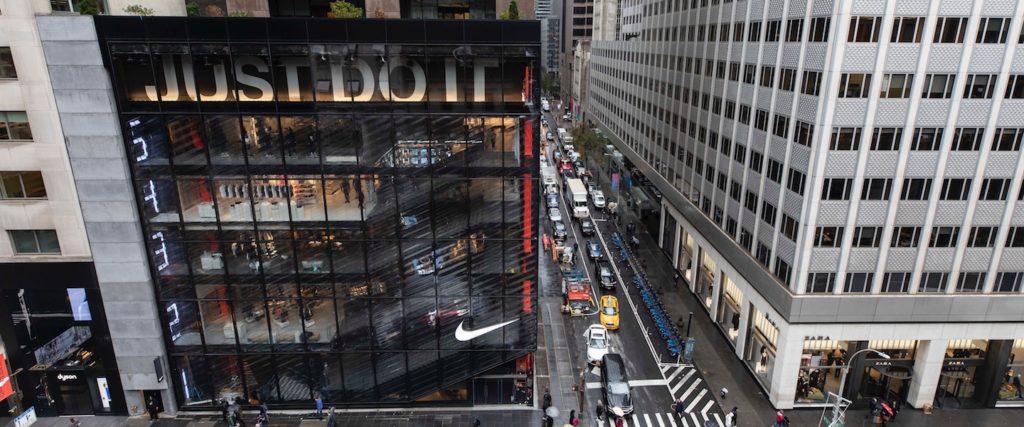Nike is still battling high inventory as it sees a slowdown in China

While Nike is chipping away at reducing its outsized inventory, the footwear and apparel giant still has a long way to go.
The company, which reported better-than-expected earnings for the second fiscal quarter of 2023 on Tuesday, revealed it has $9.3 billion worth of product, up 43% from the same time last year. It’s a slight improvement from the previous quarter, when Nike reported $9.7 billion in inventory, a 44% jump year on year. In a press release, Nike attributed its still-elevated inventory levels to “an increase in units from lapping prior year supply chain disruption, as well as higher input costs.” Its revenue for the quarter was $13.3 billion, up 17% from the prior year, largely thanks to a boost in its direct-to-consumer business.
“Consumer demand for Nike’s portfolio of brands continues to drive strong business momentum in a dynamic environment,” Executive Vice President and Chief Financial Officer Matthew Friend said. “We remain focused on what we can control, and we are on track to deliver on our operational and financial goals — setting the foundation for sustainable, profitable growth.”
Nike’s most recent earnings cover the three months ending Nov. 30, so while it includes sales from Black Friday and Cyber Monday, it doesn’t include sales from Christmas or Super Saturday. This is important because “the holiday season kind of gets chopped up between two quarters for Nike, whereas it gets fully encapsulated in most other companies’ fiscal quarters,” Tom Nikic, SVP of equity research at Wedbush Securities, told Modern Retail.
The National Retail Federation predicts that overall holiday sales in November and December will be 6% to 8% higher than last year.
Like other apparel and footwear brands, Nike has recently stepped up sales and promotions to offload excess inventory. It acknowledged that “higher markdowns to liquidate inventory, particularly in North America” caused its gross margin to drop 300 basis points.
China is also a key part of the earnings picture. While Nike has traditionally leaned on the Chinese market to prop up sales, China has struggled with supply chain issues and rising Covid-19 cases. In addition, some shoppers in China are showing a preference for cheaper, local brands over pricier, foreign ones, especially when it comes to athleticwear and sneakers. Nike’s sales for Greater China totaled $511 million for the period ending Nov. 30, 2022, a 10% drop from a year prior. North American sales went the other way, hitting $1.5 billion this quarter, a 21% jump from this time in 2021.
One bright spot for Nike is its direct-to-consumer business, which has taken up more of its focus in recent years. This quarter, DTC sales hit $5.4 billion. The previous quarter, DTC sales hit $5.1 billion. Nike has begun pulling back from wholesale partners. Last year, Nike announced it would stop selling its products with several retailers — including DSW, Urban Outfitters and Olympia Sports — to zero in on DTC.
Ultimately, for Nike, “product and innovation is what drives the business, what drives long-term, healthy, sustainable growth,” Nikic said. Five years ago, he said, Nike also had too much inventory, mostly due to competition from rivals like Adidas. However, it managed to turn things around with new sneaker styles like the Vapor Max and the Air Max 270, “both of which were big hits,” Nikic explained.
“That’s what helped get them out of their funk: having new innovative products that captured the imagination of the consumer… And that was key. So I think you’re going to want to see a strong innovation pipeline from Nike in 2023.”

